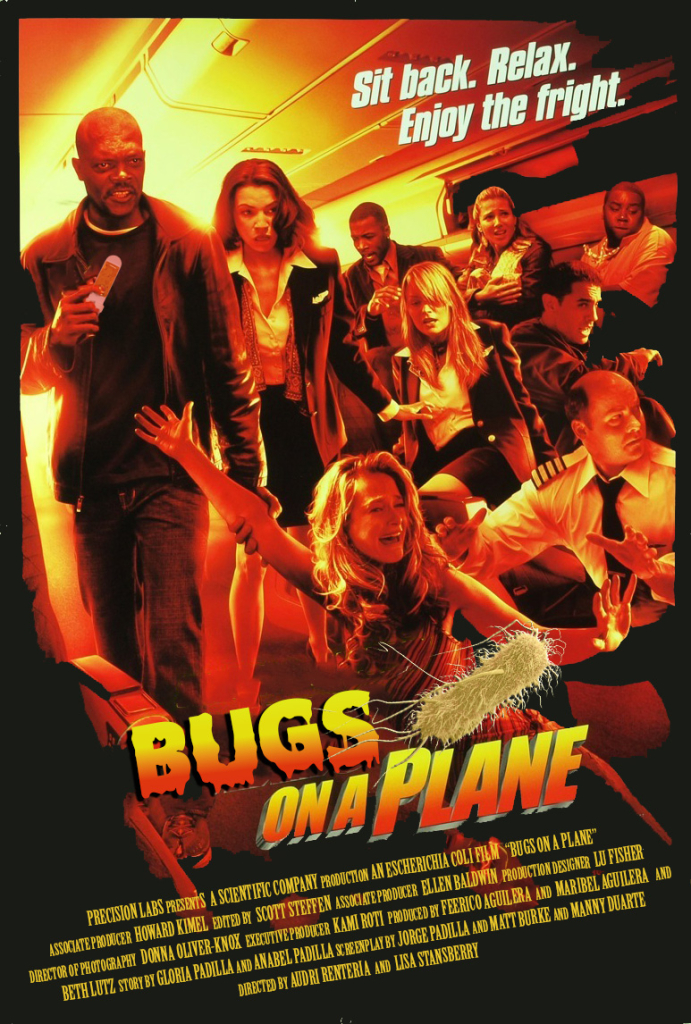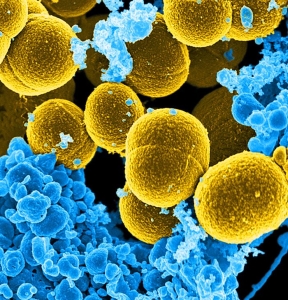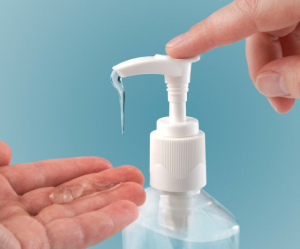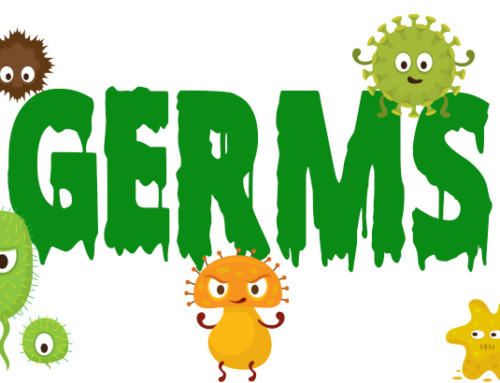In a world, where flying on a plane is a convenient way to travel, hordes of people are in close quarters, and the potential spread of disease is eminent. One man will embark on a journey, determined to find answers and change the world. Viruses will fall, and a hero will rise. BUM-BUM-BUMM!!
Did you read that in Don LaFontaine’s voice? If not, you should try it again.
Look out Hollywood; we’ve got a winner coming! Okay, it may have a lot of similarities to Snakes on a Plane… and we’re probably being over-dramatic. We might as well just get this over with and break the bad news now. This film will not be coming to a theater near you.
We’ll just stick to science from now on instead of writing screenplays, but hey, it was worth a shot. We won’t be hitting the box office with our film, but we do have some information you might find interesting, especially if you’re a frequent flyer or preparing for an upcoming trip.
In a World of Frequent Flyers…

According to the U.S. Department of Transportation’s Bureau of Transportation Statistics (BTS), U.S. airlines and foreign airlines serving the United States carried 826 million system-wide (domestic + international) scheduled service passengers in 2013. And that’s just airlines serving the U.S.!
Just think about that for a minute before letting this sink in: According to IATA (International Air Transport Association), the total number of airline passengers in 2013 exceeded 3 billion.
Three billion passengers. Naturally, we look at that number and think, GERMS.
Bugs Are Born
With all those flights to fulfill and passengers to transport, airlines are often busy doing quick turn-rounds and transit stops. Crews have little time to clean and tidy up the cabin before the next set of passengers load during short stopovers.
The World Health Organization has outlined practices to protect travelers and crews engaged in air transport in their Guide to Hygiene and Sanitation in Aviation. They outline guidelines for cleaning and disinfection of facilities and include an example cleaning chart.
According to their example chart, for stopover times under 60 minutes, the standard cabin services include:
- Disposal of waste, litter and newspapers
- Disposal of waste in seat pockets
- Collection of pillows/blankets to be folded and stored
- Empty waste bins in lavatories
- Clean lavatory toilet, sink, mirror, surfaces, changing table, handles, and floor
That’s right, standard requirements only outline disinfection of the lavatory. The airplanes are thoroughly cleaned on overnight stopovers, including a disinfection of frequently touched items, such as handles, screens, arm rests, buckles, overhead buttons and bins, etc. However, standards only suggest that the cloth-covered seats are vacuumed.
Suppose we aim low and average 85 passengers per flight, and let’s pick a plane with 4 stopovers in one day. That’s a total of 340 passengers on that plane before it’s thoroughly cleaned.
Invasion of the Bugs

Photo Credit: Frank DeLeo, Ph.D., National Institute of Allergies and Infectious Diseases (NIAID)
Remember our post on bacteria versus virus? Well, it’s important to recall the difference here. The common cold and the flu are almost exclusively viral diseases. Bacterial infections are a completely different animal, so to speak. Fortunately, there are disinfectants that can kill both.
According to data from a study presented at the annual meeting of the American Society for Microbiology, bacteria can remain on certain surfaces inside airplanes for up to 1 week.
The study was performed by Kiril Vaglenov, a grad student in the department of biological sciences at Auburn University, along with some of his colleagues. They used concentrations of E. coli and MRSA mixed with simulated sweat and/or saliva, then inoculated samples of various surfaces exposed to typical airplane conditions.
Escherichia coli, a fecal coliform, and Methycillin-Resistant Staphylococcus aureus are most often spread by contaminated hands.
The study found that MRSA survived the longest on the seat pocket cloth. E. coli survived longest on the armrest (96 hours), followed by the tray table (72 hours), and the toilet handle (48 hours).
Makes sense, right? You have probably pulled a magazine out, stuffed some trash in, or stored an electronic device in the seat pocket. That used Kleenex you found in the seat pocket when you were shuffling through the reading materials most certainly contained germs. And who doesn’t use the armrest and tray table?
Disinfecting Heroes Rise, Viruses Fall

While the data from this study provides insight into the relative risk of infection, the study did not take into account standard disinfection procedures. Rather, they evaluated the persistence of E. coli cells in a viable, but not culturable (VBNC) state.
These types of studies are important in improving cleaning and disinfection procedures for airplane cabin surfaces. Proper disinfection will kill off viruses and bacteria, and prevent the spread of illness.
We aren’t trying to scare you. A cold or the flu here and there isn’t surprising considering the number of people flying annually, and serious illnesses seem to be kept at bay.
Just think about traveling with some hand sanitizer and disinfecting wipes next time. Wipe down tray tables, arm rests, TV touch screens, etc. Don’t stash personal items, such as glasses or electronics in the seat pocket. After touching the lavatory door handle, be sure to wash your hands or use some hand sanitizer. The key is to disinfect, disinfect, disinfect.
Keep calm and fly on.







Leave A Comment